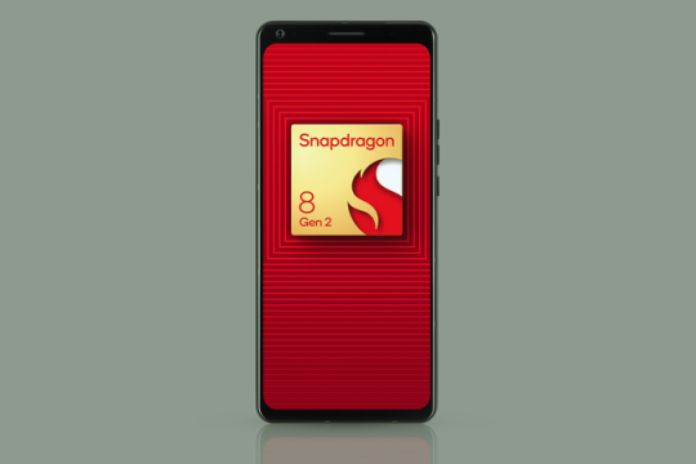The new onboard features support Wi-Fi 7 and 32-bit and in-game ray tracing. In the now traditional appointment in Hawaii of the Snapdragon Summit, Qualcomm has formalized the chip that will drive the upcoming top-of-the-range Android smartphones or Snapdragon 8 Gen 2. The new SoC brings numerous innovations, such as support for the Wi-Fi 7 and 32-bit standard and the much-requested ray tracing for the realistic representation of in-game lights and shadows.
Naturally, artificial intelligence will be one of the fundamental pillars. What to expect from the newly unveiled chip? The new platform has a 4-nanometer production process and can handle up to 16 GB of fast RAM as standard and the latest generation of 4.0 memories.
As regards the structure, there is a primary Core (Cortex X3) that can go up to 3.2 GHz, accompanied by four other CPUs up to 2.8 GHz for performance and three 2 GHz CPUs that take care of the ‘efficiency. According to estimates, the general performance increases by up to 40% compared to the previous flagship chip Snapdragon 8 Gen 1. On The Connections side, there is a Snapdragon X70 modem with 5G support of both types and Fast Connect 7800 technology to connect with the Wi-Fi 7 standard up to 5.8 Gbps.
The chip can shoot up to 8k resolution with hdr active and fluidity of 30 fps and playback via AV1 codec of 8K hdr video at 60 fps. There is also a real-time system that improves photos and videos and can welcome the new 200-megapixel sensors. For artificial intelligence, there is a dedicated Hexagon processor that is more than four times better than last year: the a.i. It works in everything from camera to translation to more natural language processing.
Finally, welcome ray tracing for a more immersive and rewarding gaming experience, with the Adreno graphics card improving by 25% compared to 2021, with consumption reduced by 40%. The GPU is also the first to support all currently available HDR formats, i.e., HDR10, HDR 10+, HLG, and Dolby Vision. Finally, Snapdragon Sound technology opens up spatial audio with dynamic head tracking and lossless 48kHz music streaming.
There is still no name of the first product that will host the new Snapdragon 8 Gen 2 chip on board, but among those that will appear by the end of 2022, there will undoubtedly be a new line of Oppo’s top-of-the-range Find X and a still not better-specified Honor branded model.
Accelerate Artificial Intelligence
Smartphones are one of the virtual platforms for using “Artificial Intelligence” (Artificial Intelligence, AI). As a rule, neural networks are trained on high-performance computers for specific tasks and then used as so-called “inference machines” on the end devices. Qualcomm now claims to have become the “world’s inference leader” with the SD 8 Gen 2. Among other things, the “INT4” accuracy class, which is new for mobile applications, is intended to ensure this. Although it calculates less precisely than other classes, it can work very quickly and energy-efficiently in applications for which this accuracy is sufficient. In extreme cases, this and other optimizations should make it possible to increase performance by more than four times.
Graphics: Faster And With Ray Tracing
Of course, the Snapdragon internal graphics processor has also been optimized. The new Adreno GPU should bring 25% more performance than its predecessor or use 45% less energy with the same version. But it’s not just about performance and power: As a unique feature, the new GPU on smartphones with OLED displays should ensure that the panels do not show any burn-in effects through special “anti-aging compensation.” Manufacturers of OLED TVs have long installed similar features.
It is also exciting that many smartphone manufacturers have promised to support a unique graphics feature Qualcomm is introducing with the 8 Gen 2: hardware-accelerated ray tracing. This means that more detailed representations of 3D environments are possible. These manufacturers include Xiaomi, Honor, OnePlus, Oppo, and Vivo.
Dynamic Spatial Sound
If Qualcomm has its way, appropriately equipped headphones and smartphones will in the future be able to ensure a lifelike sound experience: Dynamic Spatial Audio can best be explained with an example: If you listen to a live concert, for instance, you always have the stage right in front of your nose – too if you turn your head 90 degrees to the left, all the instruments still seem to be coming directly from the show – and not from the right as they would in real life. In the dynamic, spatial sound experience, the headphones record the movements of the head and forward them to the smartphone. This calculates an adapted sound signal from this and thus ensures a real spatial experience that dynamically adapts to the listener’s movements.
Also Read: The Perfect Headphones For Any Occasion : AirPods Pro

